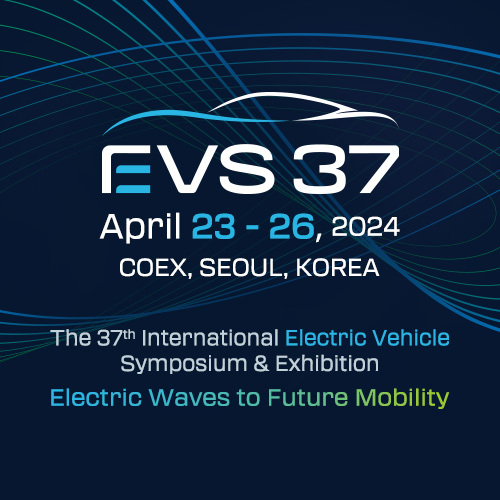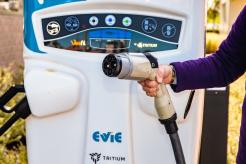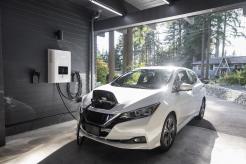Previously, those who invested in the electric vehicle (EV) industry directed their funds to EV production companies. However, as more EVs flood the roads, the need for EV charging stations is soaring, and EV infrastructure has become the investment focus.
Here are ten industries leading the way in investing in EV charging infrastructure, stations, and networks.
1. Apartments and Condominiums

(Apartments and Condominiums; Unsplash.com)
Charging stations are proven to attract and retain residents in multi-unit developments. EV owners increasingly reject otherwise perfect apartments or condominiums due to their lack of on-site charging stations.
Fortunately, property managers can monetize on-site charging stations reasonably easily by setting up management software to cover their costs and even turn a profit. There may also be rebates available through government grants to offset the purchase and installation of EV charging stations.
Additionally, charging stations improve property values overall and put property owners ahead of the curve in terms of federal and state mandates to meet emissions targets.
2. Automobile Dealerships

(Automobile Dealerships; Unsplash.com)
Car dealerships are adding a new revenue stream through home charger deployment. By partnering with a charging solutions company, dealerships can offer customers the option of a complete turnkey Level 1 or Level 2 charging system installed at their homes as part of the deal.
Additionally, dealerships that want to make EV charging available on their lots can connect all dealership locations under one group to form a single charging network for customers and employees.
3. Cities and Towns

(Cities and Towns; Unsplash.com)
According to the EPA, transportation produces 28% of total U.S. greenhouse gas (GHG) emissions — 47% in California. Cities and towns are now focusing on ensuring that the infrastructure required to make electric vehicle adoption work is widely available and usable.
Municipalities can incorporate EV charging virtually anywhere. Charging stations can be included in places like parking lots, municipal parking garages, solar carports or overhangs, public parking garages, fleet depots, and unique locations such as city halls, courthouses, libraries, community centers, parks, city-owned companies, and other infrastructure on city-owned land.
4. Commercial Fleets

(Commercial Fleets; Unsplash.com)
By 2030, the US market for energy-optimization services to support EV fleet charging could be worth $15 billion per year. EV fleets are an up-and-coming segment of the charging services market, which can help fleet operators reduce costs through efficient energy procurement and management.
Assuming widespread EV adoption, McKinsey projects that U.S. commercial and passenger fleets in the United States could include 8 million EVs by 2030 (compared to less than 5,000 in 2018). That’s 10-15 percent of all fleet vehicles.
Fleets love EVs because they can quickly recoup the extra up-front cost of EV ownership and achieve lower total ownership costs over time. Estimates are that by 2030, EVs will reach a total cost of ownership of 15-25 percent less than equivalent internal combustion engine (ICE) cars.
5. Construction (Homebuilders)

(Construction and Homebuilders; Unsplash.com)
EV charging infrastructure is about to become as common as 240V outlets for home appliances. In 2020, the International Code Council (ICC) approved U.S. building code changes that require all new home construction to be “EV ready.”
At a minimum, new homes built in the U.S. must now include sufficient infrastructure to charge one EV overnight in the garage. However, the decision and expense to install a charging station are up to the homeowner.
Building codes for new multifamily homes now require two overnight EV charging spots and extra spaces that owners can easily convert to charging sites later (“EV-capable”).
The ICC cited research that the U.S. will need 9.6 million more plugs by 2030 – the majority in family homes – to meet demand. This change to building codes is expected to raise the price of EV-ready homes by an average of $920. That compares to retrofitting the infrastructure later, which could cost up to $3,550.
6. Educational Institutions

(Educational Institutions; Unsplash.com)
Educational institutions are increasingly installing intelligent EV charging stations on campuses to provide modern amenities to faculty, students, and guests and meet sustainability goals.
In addition to providing a coveted campus amenity, the institutions can take advantage of EV infrastructure incentives, earn LEED certification points, and stay ahead of new building regulations governing the availability of onsite EV charging.
7. Hospitality and Entertainment Venues

(Hospitality and Entertainment Venues; Unsplash.com)
Hotels and restaurants are increasingly adding on-site EV charging facilities to attract customers and meet sustainability goals. Some make the charging service a free customer perk, while others monetize it.
These businesses usually receive rave reviews and top ratings on sites such as TripAdvisor and higher visibility in EV charging network apps. They can also be recognized on travel apps as a leader in “green” initiatives and practices, which increases their profile on the apps.
8. Employers (Workplaces)

(Employers and Workplaces; Unsplash.com)
On-site workplace charging helps attract and retain a cutting-edge workforce and demonstrates leadership by your company in adopting advanced technologies.
Employer resources on planning, organizing, and executing successful workplace charging events are available in the Clean Cities Workplace Charging Toolkit from the U.S. Department of Energy.
Before installing EV charging solutions for their workforce, employers should consult their utility, electrical contractor, and charging equipment provider to discuss potential challenges. For example, offering charging at workplaces in leased facilities requires negotiations with the building owners.
9. Parking Lot and Deck Operators

(Parking Lot and Deck Operators; Unsplash.com)
Nearly 2 million new EVs will be on the road this year, compared to the couple of thousand just a few years ago. According to Cars.com, 50 million consumers will likely choose an EV for their next car. In comparison, Bloomberg Report’s “Electric Vehicle Outlook” estimates that 57% of vehicles on the road in 2050 will be EVs.
EV chargers give parking facility owners a chance to offer local visitors, guests, staff, and area employees a highly desired amenity while capturing an additional source of revenue that requires little to no time investment.
EV owners will always choose EVSE-equipped parking facilities over others – and bring their non-EV-owning friends and colleagues.
10. Utility Companies

(Utility Companies; Unsplash.com)
Bloomberg estimates EV sales will reach 35% of North American auto sales by 2030. Utilities are helping by offering flexible price options for EV drivers and providing time-of-use (TOU) rates to incentivize charger usage during off-peak periods, reducing stress on the power grid during peak demand.
For example, a West Coast association of U.S. utility companies has collaborated on offering an online TOU tool that identifies the lowest-cost EV rate plan and related rebates and incentives.
Utilities also offer multi-family properties an array of tax credits, rebates, and grants for installing and using EV charging stations. For example, a Southwest U.S. utility company provides a refund of up to $4,000, or 50% of the cost, to install Level 2 charging stations for businesses and multi-unit dwellings.
Are you interested in learning more about EV charging infrastructure across industries? Join our upcoming EV Charging Summit & Expo!






